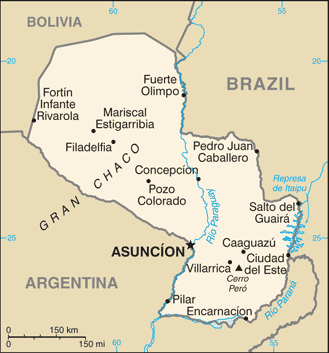NewsDesk @bactiman63
n recent years, Paraguay has seen a progressive increase in new cases of HIV infection. From 2018 to 2019, the percentage of new diagnoses rose from 1,564 to 1,605 (2.62%); Subsequently, there was a 25% decrease in the number of people diagnosed in 2020. However, from 2021 to 2022 there was an increase in new HIV diagnoses of 26.48% compared to the 2020 period.

In 2022, 1,519 new diagnoses of the human immunodeficiency virus (HIV) were identified, of which 495 were categorized as AIDS, says the report on the epidemiological situation of HIV in Paraguay, from the National Program for HIV/AIDS/STI Control ( PRONAAIDS).
A high percentage of the new diagnoses registered in the country were detected in the general population (58.66%), also in men who have sex with men (32.19%) and in pregnant women (6.91%). On the other hand, there is a lower proportion of new diagnoses in persons deprived of liberty (0.20%), in female sex workers (0.20%), in drug users (0.33%) and in the transgender population (0. 99%).
The highest rate of new diagnoses is located in the Capital (57.21%), followed by Amambay, Misiones, Central and Concepción.
Half are between 20 and 34 years old
According to the report, 52.73% of those newly diagnosed with HIV were in the group between 20 and 34 years; 0.72% were under 5 years of age.
71.36% of the new diagnoses in 2022 were men.
The highest frequency of diagnoses is observed in the age group of 25 to 34 years and in people aged 50 or older.
During 2022, the monthly average of new diagnoses was 127 people with HIV, with a minimum of 81 in the month of January and a maximum of 170 in the month of September. Meanwhile, between the months of June and November, the highest number of new diagnoses of HIV infection in the country was reported.
Rate
The rate of new HIV diagnoses presents an increasing trend in people aged 15 to 19 and 20 to 24 years, from 2013 to 2019, with an increase from 11.73 to 14.10 and from 34.83 to 43.79 per 100,000 inhabitants respectively.
In 2020, a decrease in the rate of new HIV diagnoses was noted in both age groups, with a slight increase being observed from 2021 to 2022. While the rate of new HIV diagnoses in children under 5 years of age presents a trend stable in the last 5 years.
HIV in pregnant women
Of the total number of women diagnosed with HIV in 2022 (12 to 51 years old), 29.04% were pregnant.
Most of the pregnant women diagnosed with the human immunodeficiency virus that year were between the ages of 25 and 34, the highest percentage coming from Central, Alto Paraná and Amambay.
Antiretroviral treatment
Some 11,891 people are receiving antiretroviral treatment, of which 8,654 are located in Asunción, 948 in Alto Paraná, 727 in Central and 402 in Itapúa.
Mortality
In 2022, 112 people died with HIV: 87 men and 25 women.
The accumulated mortality rate in the country is 4.72.
Accumulated country data
From the beginning of the epidemic in Paraguay, in 1985 to 2022, there are 26,569 people diagnosed with HIV, of which 9,413 died. Currently, 17,156 are people living with HIV.
The risk of contracting HIV is:
• 38 times higher for sex workers.
• 29 times higher among people who inject drugs.
• 28 times higher among men who have sex with men.
• 22 times higher for transgender women.
Every week, about 4,900 young women between the ages of 15 and 24 become infected with HIV.
Belize now certified malaria-free: ‘This is an extraordinary achievement for Belize’
Peru reports 241% increase in dengue resulting in worst outbreak in country history
Malaria in Brazil: Elimination by 2030 a country priority
Brazil: Rocky Mountain spotted fever outbreak in Campinas, São Paulo State


